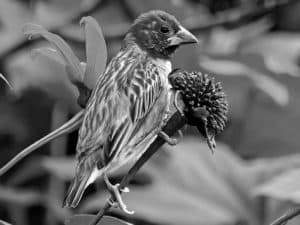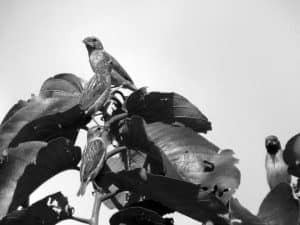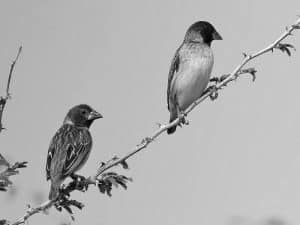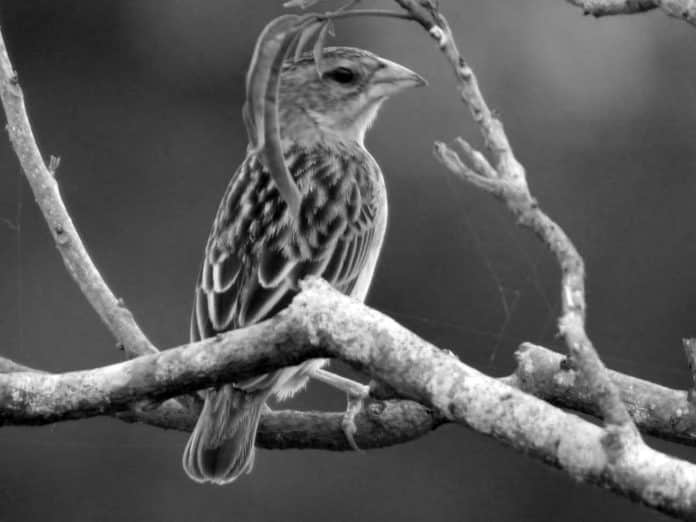Introduction to the Red-Headed Quelea
As you explore the diverse avian wonders of Tanzania, one species that stands out is the captivating red-headed quelea. This small, finch-like bird is not only a sight to behold but also a fascinating subject for bird enthusiasts and nature lovers alike. In this comprehensive guide, we will delve into the world of the red-headed quelea in Tanzania, uncovering its unique habitat, physical characteristics, behaviors, and the ongoing efforts to conserve this remarkable species.
Habitat and Distribution of the Red-Headed Quelea in Tanzania

The red-headed quelea (Quelea erythrops) is native to the African continent, with its primary range encompassing the eastern and central regions of the continent. In Tanzania, this species is found predominantly in the central and northern parts of the country, thriving in a variety of habitats that include:
- Savanna woodlands
- Grasslands
- Agricultural areas
- Wetlands and marshes
The red-headed quelea’s adaptability allows it to thrive in these diverse environments, making it a common sight for birdwatchers and nature enthusiasts exploring the Tanzanian landscape.
Physical Characteristics of the Red-Headed Quelea
The red-headed quelea is a small, stocky bird, typically measuring between 12-15 centimeters in length. Its most distinctive feature is the striking crimson-red plumage that adorns its head, neck, and upper chest, contrasting beautifully with its black beak and dark eyes. During the breeding season, the male’s vibrant coloration becomes even more pronounced, making it a true sight to behold.
The female, on the other hand, exhibits a more subdued appearance, with a grayish-brown head and back, and a paler underside. Despite their differences in appearance, both male and female red-headed queleas share a compact, finch-like build and a conical beak well-suited for their seed-based diet.
Behaviors and Breeding Patterns of the Red-Headed Quelea
The red-headed quelea is a highly social bird, often seen in large flocks that can number in the thousands. These flocks engage in synchronized movements, swooping and diving through the air in a mesmerizing display of avian coordination. This behavior not only helps the birds to find and exploit food sources but also serves as a defense mechanism against predators.
When it comes to breeding, the red-headed quelea exhibits a unique and fascinating pattern. During the breeding season, typically coinciding with the onset of the rainy season, the birds form large breeding colonies, often in areas with abundant vegetation and access to water. The females construct intricate, cup-shaped nests, which they line with a variety of materials, such as grass, reeds, and feathers. Within these nests, the females lay between 2-4 eggs, which both parents take turns incubating and caring for.
The chicks hatch after approximately 12-14 days and are fed by both parents until they are able to fend for themselves, usually around 2-3 weeks after hatching. This coordinated breeding behavior allows the red-headed quelea to take advantage of the seasonal abundance of resources, ensuring the survival and success of their offspring.
Threats and Conservation Efforts for the Red-Headed Quelea
Despite their widespread distribution and relatively large population, the red-headed quelea faces several threats to its long-term survival. One of the primary concerns is the loss and degradation of their natural habitats, primarily due to human activities such as agricultural expansion, urbanization, and deforestation.
Additionally, the red-headed quelea is sometimes perceived as an agricultural pest, leading to control measures that can negatively impact their populations. Efforts to manage quelea populations often involve the use of pesticides or the destruction of their breeding colonies, which can have unintended consequences on the broader ecosystem.
To address these concerns, various conservation organizations and government agencies in Tanzania have implemented initiatives to protect the red-headed quelea and its habitat. These efforts include:
- Habitat restoration and conservation programs
- Sustainable agricultural practices that minimize the impact on quelea populations
- Public education and awareness campaigns to promote the appreciation and protection of this unique species
By working together, we can ensure that the red-headed quelea continues to thrive and contribute to the rich biodiversity of Tanzania’s avian landscape.
Bird-Watching Opportunities in Tanzania to Spot the Red-Headed Quelea

Tanzania is a prime destination for birdwatchers, with a diverse array of avian species to discover. When it comes to the red-headed quelea, there are several prime locations and birdwatching opportunities that you can explore:
- Serengeti National Park: This iconic park is home to large flocks of red-headed queleas, particularly during the breeding season when they gather in massive colonies.
- Tarangire National Park: The diverse habitats of Tarangire, including its savanna woodlands and grasslands, provide excellent opportunities to spot the red-headed quelea.
- Lake Manyara National Park: The wetlands and marshes of this park are a prime habitat for the red-headed quelea, offering birdwatchers a chance to observe their behaviors and interactions.
- Arusha National Park: This park’s varied landscapes, from montane forests to grasslands, provide a perfect setting to catch a glimpse of the red-headed quelea.
Whether you’re an experienced birdwatcher or a nature enthusiast, Tanzania’s diverse national parks and protected areas offer unparalleled opportunities to witness the captivating red-headed quelea in its natural habitat.
Interesting Facts about the Red-Headed Quelea
The red-headed quelea is a truly remarkable bird, and there are several fascinating facts that make it even more intriguing:
- Largest Breeding Colonies: The red-headed quelea is known to form some of the largest breeding colonies in the world, with estimates of over a million nests in a single colony.
- Nomadic Behavior: These birds are highly nomadic, constantly moving in search of food and suitable breeding grounds, often covering vast distances across the African continent.
- Adaptable Diet: The red-headed quelea is an opportunistic feeder, consuming a wide variety of seeds, grains, and even small insects, allowing it to thrive in diverse environments.
- Importance in Ecosystems: As a significant prey species, the red-headed quelea plays a crucial role in the food chain, providing sustenance for a variety of predators, including raptors, snakes, and small mammals.
- Cultural Significance: In some African cultures, the red-headed quelea is revered and even considered a symbol of fertility and abundance, reflecting its importance in the region’s natural and cultural heritage.
These fascinating facts highlight the unique place the red-headed quelea holds in the natural world, and the ongoing efforts to understand and protect this remarkable avian species.
How to Identify and Differentiate the Red-Headed Quelea from Similar Bird Species
Distinguishing the red-headed quelea from other finch-like birds can be a rewarding challenge for birdwatchers. Here are some key features to look for when identifying this species:
- Plumage: The striking crimson-red head and neck of the male red-headed quelea is a distinctive feature that sets it apart from similar species.
- Beak: The red-headed quelea has a conical, finch-like beak, which is black in color and helps differentiate it from other finches with different beak shapes and colors.
- Size and Build: The red-headed quelea is a small, stocky bird, typically measuring between 12-15 centimeters in length, with a compact, finch-like body shape.
- Behavior: The red-headed quelea’s tendency to form large, coordinated flocks and its distinctive flight patterns can also aid in identification.
Some bird species that may be confused with the red-headed quelea include the village weaver, the red-billed quelea, and the red-billed firefinch. However, with a keen eye and an understanding of the red-headed quelea’s unique characteristics, you can confidently identify this remarkable bird during your birdwatching adventures in Tanzania.
Red-Headed Quelea Research and Ongoing Studies in Tanzania
The red-headed quelea has long been a subject of interest for ornithologists and conservation biologists, and Tanzania’s diverse avian landscape has provided a rich ground for ongoing research and studies. Some of the key areas of focus include:
- Population Dynamics: Researchers are studying the factors that influence the red-headed quelea’s population size, distribution, and migration patterns, with the aim of developing more effective conservation strategies.
- Breeding Behavior: Detailed observations of the red-headed quelea’s breeding colonies and nesting habits are helping to shed light on the species’ reproductive strategies and the environmental factors that shape them.
- Habitat Preferences: Investigations into the red-headed quelea’s habitat requirements and its adaptations to different ecosystems are crucial for understanding its role in the broader Tanzanian ecosystem.
- Pest Management: Given the red-headed quelea’s potential impact on agricultural crops, researchers are exploring sustainable pest management approaches that minimize harm to the species while addressing the concerns of local farmers.
- Ecotourism Potential: The red-headed quelea’s charismatic appearance and unique behaviors have drawn the interest of birdwatchers and eco-tourists, leading to studies on the species’ potential to contribute to Tanzania’s thriving ecotourism industry.
By continuing to study and monitor the red-headed quelea, researchers and conservation organizations in Tanzania are working to ensure the long-term survival and appreciation of this remarkable avian species.
Conclusion: Appreciating the Beauty and Uniqueness of the Red-Headed Quelea in Tanzania

The red-headed quelea is a true gem of Tanzania’s avian diversity, captivating birdwatchers and nature enthusiasts with its striking appearance and fascinating behaviors. As you explore the country’s national parks and protected areas, keep an eye out for the vibrant crimson-headed flocks, and take the time to appreciate the unique role this species plays in the Tanzanian ecosystem.
Whether you’re a seasoned birdwatcher or a curious nature lover, the red-headed quelea is a species that will undoubtedly leave a lasting impression. So, embark on your Tanzanian adventure, and let the beauty and uniqueness of this remarkable bird inspire your appreciation for the incredible diversity of life that thrives in this remarkable African nation.

































